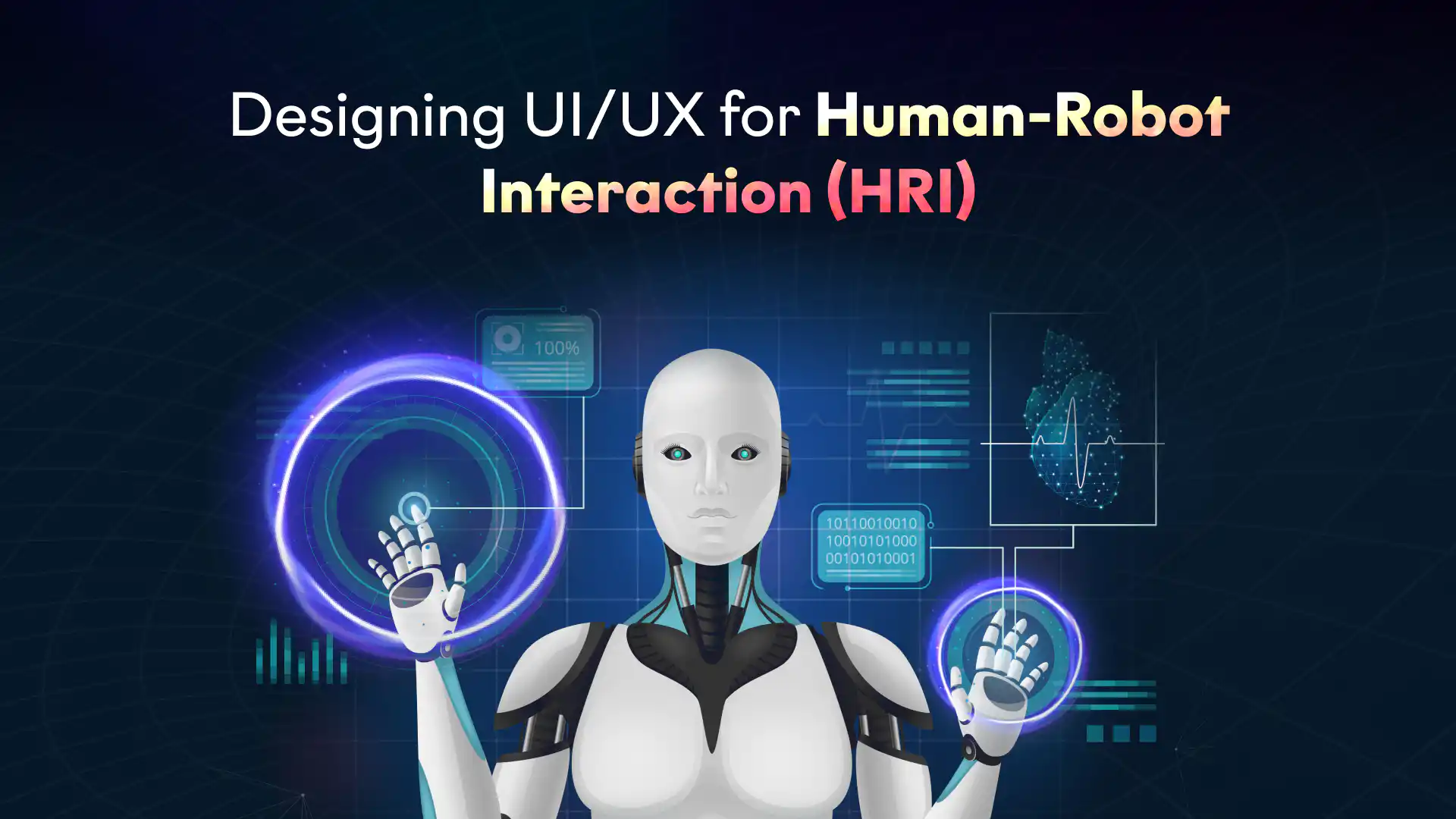
The Rise of Human-Robot Interaction (HRI)
Introduction: As robotics and artificial intelligence continue to advance, human-robot interaction (HRI) is becoming increasingly prevalent in our daily lives. From home assistants to industrial robots, these interactions require thoughtful UI/UX design to ensure seamless and engaging experiences between humans and robots. In this blog, we’ll explore the challenges and considerations of designing UI/UX for HRI and discuss best practices for creating successful interactions.
Challenges and Considerations in Designing UI/UX for HRI
Designing effective UI/UX for HRI involves addressing several unique challenges and considerations:
- Understanding User Expectations: Humans have preconceived notions about how robots should behave and interact. Designers must consider these expectations and create UI/UX that aligns with them, while also providing clear communication about the robot’s capabilities and limitations.
- Balancing Autonomy and Control: Striking the right balance between robot autonomy and user control is critical. Users should feel empowered to control the robot when needed, while the robot should also be able to complete tasks independently when appropriate.
- Establishing Trust and Reliability: For users to feel comfortable interacting with robots, the UI/UX must convey trustworthiness and reliability. This involves providing clear feedback, anticipating user needs, and handling errors gracefully.
- Adapting to Diverse User Groups: Robots often interact with users of varying ages, backgrounds, and abilities. Designers must ensure the UI/UX is inclusive and accessible to a wide range of users.
Best Practices for Designing UI/UX for HRI
Here are some best practices for designing UI/UX for HRI:
- Adopt a User-Centered Approach: Begin by understanding the needs, preferences, and constraints of your target users. Conduct user research, create personas, and map user journeys to inform your design decisions.
- Prioritize Simplicity and Clarity: Make your UI/UX design as simple and intuitive as possible. Avoid using complex jargon or technical terms that may confuse users, and opt for clear, concise language instead.
- Use Natural Interaction Modalities: Design interactions that feel natural and intuitive for users, such as voice commands, gestures, or touch-based inputs. This will help create a more engaging and seamless HRI experience.
- Provide Clear Feedback: Offer informative feedback during user interactions to confirm that their commands have been understood and executed correctly. This can help establish trust and reliability in the robot.
- Design for Accessibility: Ensure your UI/UX design is accessible and inclusive to a diverse user group, taking into consideration factors like age, background, and abilities. Use clear visuals, strong contrast, and easy-to-read fonts to enhance readability.
- Test and Iterate: Test your UI/UX design with real users, gather feedback, and iterate on the design to address any issues or pain points that arise.
The Future of UI/UX Design in HRI
We can anticipate additional developments and improvements in UI/UX design as HRI spreads:
- Improved AI and Context-Awareness: As AI and machine learning evolve, robots will become better at understanding and adapting to their environment and user preferences, leading to more personalized and context-aware HRI experiences.
- Multi-modal Interfaces: Combining various input methods, such as voice, touch, and gestures, multi-modal interfaces will enable more natural and intuitive interactions between humans and robots.
- Emotional Intelligence: By incorporating emotional intelligence into robotics, robots will be able to recognise and react to human emotions, improving user experience overall and fostering a closer relationship between humans and robots.
- Collaboration Between Robots and Humans: Future UI/UX designs will focus on facilitating seamless collaboration between humans and robots, allowing them to work together effectively to complete tasks and achieve shared goals.
Real-World Examples of HRI UI/UX Design
Let’s explore some real-world examples of HRI UI/UX design:
- Home Assistants: Smart speakers like Amazon Echo and Google Home have become ubiquitous in many households. Their voice-based UI enables users to interact with the devices naturally and effortlessly, making them an excellent example of HRI UI/UX design.
- Industrial Robots: In manufacturing and logistics, robots often work alongside humans to complete tasks. UI/UX design for these robots focuses on ensuring smooth collaboration and clear communication between humans and machines.
- Healthcare Robots: Robots are increasingly being used in healthcare settings to assist with tasks such as patient monitoring and therapy. Designing UI/UX for these robots involves ensuring that they are accessible and easy to use for both patients and healthcare professionals.
Conclusion: The Importance of UI/UX Design in HRI
As the prevalence of human-robot interactions grows, the importance of effective UI/UX design in HRI cannot be overstated. By understanding user expectations, balancing autonomy and control, establishing trust, and designing for diverse user groups, we can create seamless and engaging experiences that make the most of the potential offered by robotics and artificial intelligence. By following best practices and staying up to date with emerging trends, designers can help shape the future of HRI and ensure that humans and robots can coexist harmoniously and productively.
